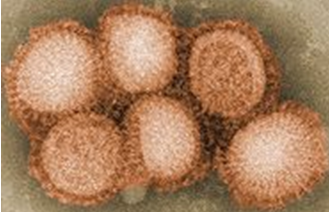Team:Georgia State/Oursystem
From 2010.igem.org
(→H1N1 VACCINE) |
|||
| (6 intermediate revisions not shown) | |||
| Line 1: | Line 1: | ||
| - | + | {{Georgia_State/Header}} | |
| + | |||
| + | |||
| + | |||
| + | |||
| + | |||
| + | == H1N1 VACCINE == | ||
| + | |||
| + | |||
| - | |||
'''Background''': | '''Background''': | ||
In 2009 the World Health Organization raised its pandemic alert for H1N1 influenza A | In 2009 the World Health Organization raised its pandemic alert for H1N1 influenza A | ||
| Line 19: | Line 26: | ||
'''The Pichia System:''' | '''The Pichia System:''' | ||
| - | The Pichia system | + | The Pichia system is an ideal construct for producing vaccines. We have designed a standard Pichia system that can be used for the production of various different vaccines. In theory, a high yield circuit can be established that only requires the exchange of the variable antigen, while leaving the remaining factors constant. In the circuit presented below, a vector has been designed to express the HA globular head influenza A antigen under the control of the strong constitutive promter pGAP. |
| - | + | ||
| - | used for the production of various different vaccines. | + | |
| - | + | [[Image:H1N1.png|Center|atl=Alt text|H1N1 INFLUENZA A VIRUS]] | |
| - | antigen | + | |
| - | + | ||
| + | {{Georgia_State/Footer}} | ||
Latest revision as of 03:21, 28 October 2010

H1N1 VACCINE
Background: In 2009 the World Health Organization raised its pandemic alert for H1N1 influenza A virus to the 6 phase alert. This is the highest alert level and it indicates widespread community transmission of the virus in over two continents. The H1N1 Influenza A virus is a quadruple reassortment of two swine strains, one human strain, and one avian strain. More than 214 countries and territories have reported laboratory – confirmed cases of pandemic H1N1 Influenza A. The US Centers for Disease Control and Prevention reported between April 2009 and April 2010, approximately 61million cases of pandemic H1N1 occurred, including 274,000 hospitalizations and 12,470 deaths.
Problem: Efficient and timely vaccine production was a challenge for the scientific community during the pandemic outbreak of H1N1. Another problem with the Influenza viruses is the high variability and mutations that they present with each year. This makes vaccine production time difficult and time consuming.
The Pichia System: The Pichia system is an ideal construct for producing vaccines. We have designed a standard Pichia system that can be used for the production of various different vaccines. In theory, a high yield circuit can be established that only requires the exchange of the variable antigen, while leaving the remaining factors constant. In the circuit presented below, a vector has been designed to express the HA globular head influenza A antigen under the control of the strong constitutive promter pGAP.
 "
"
